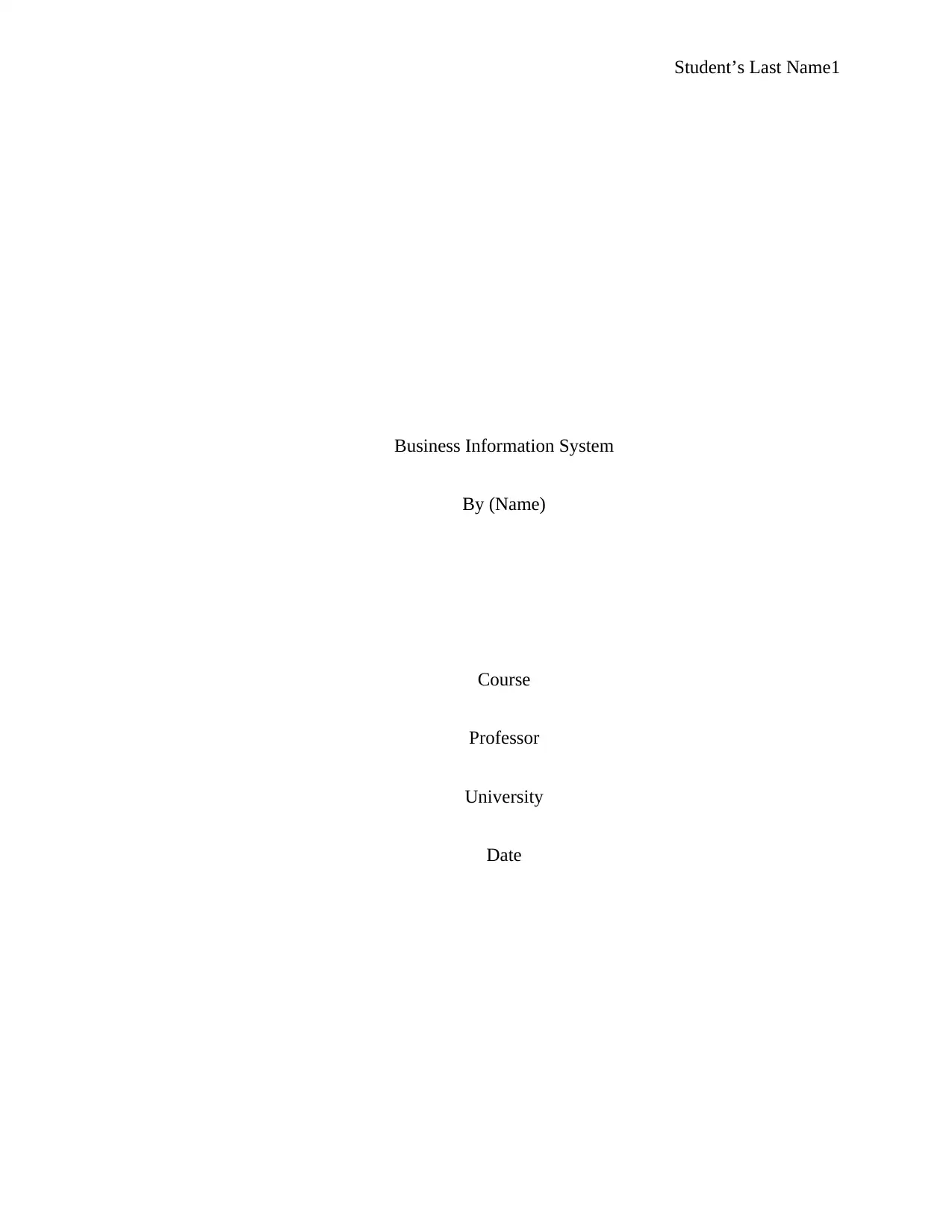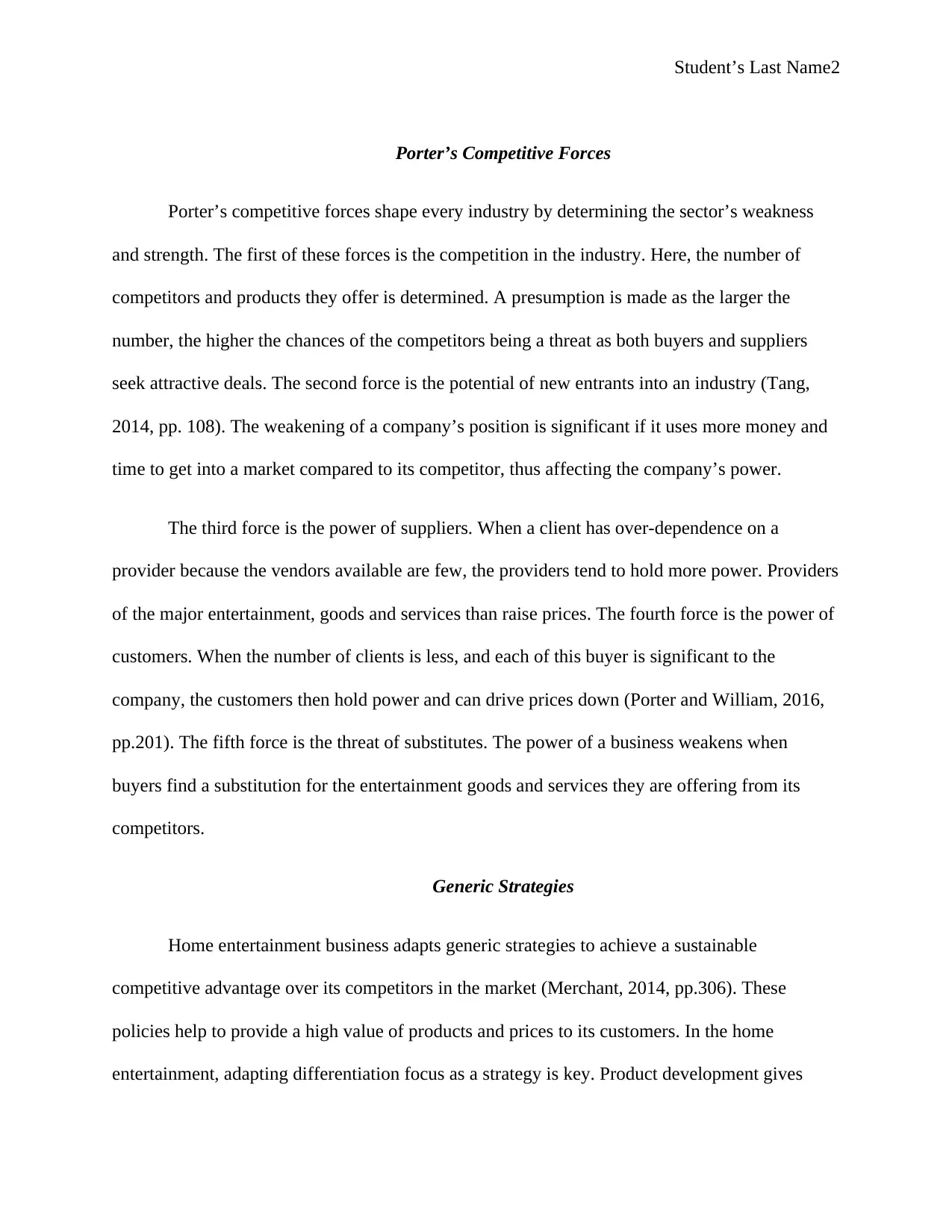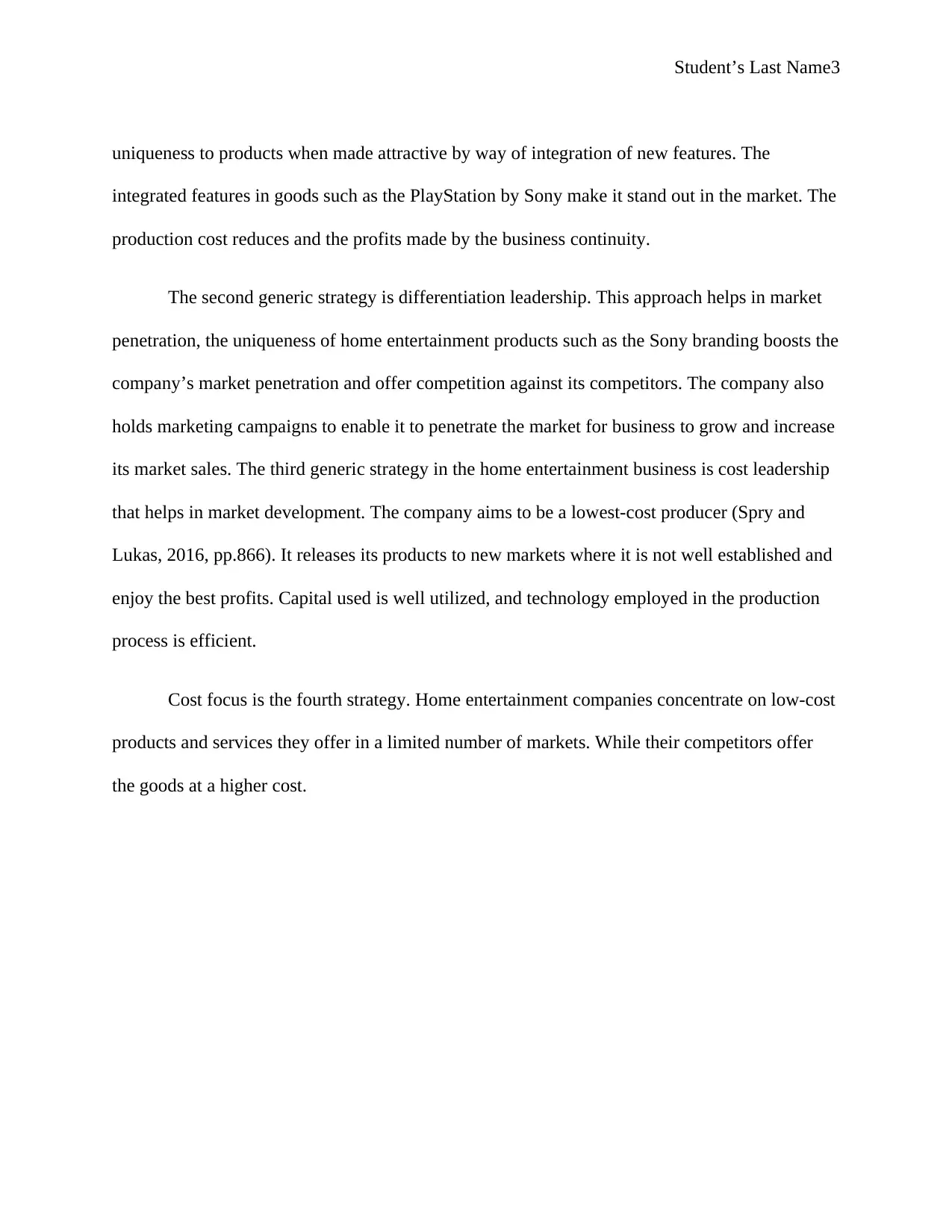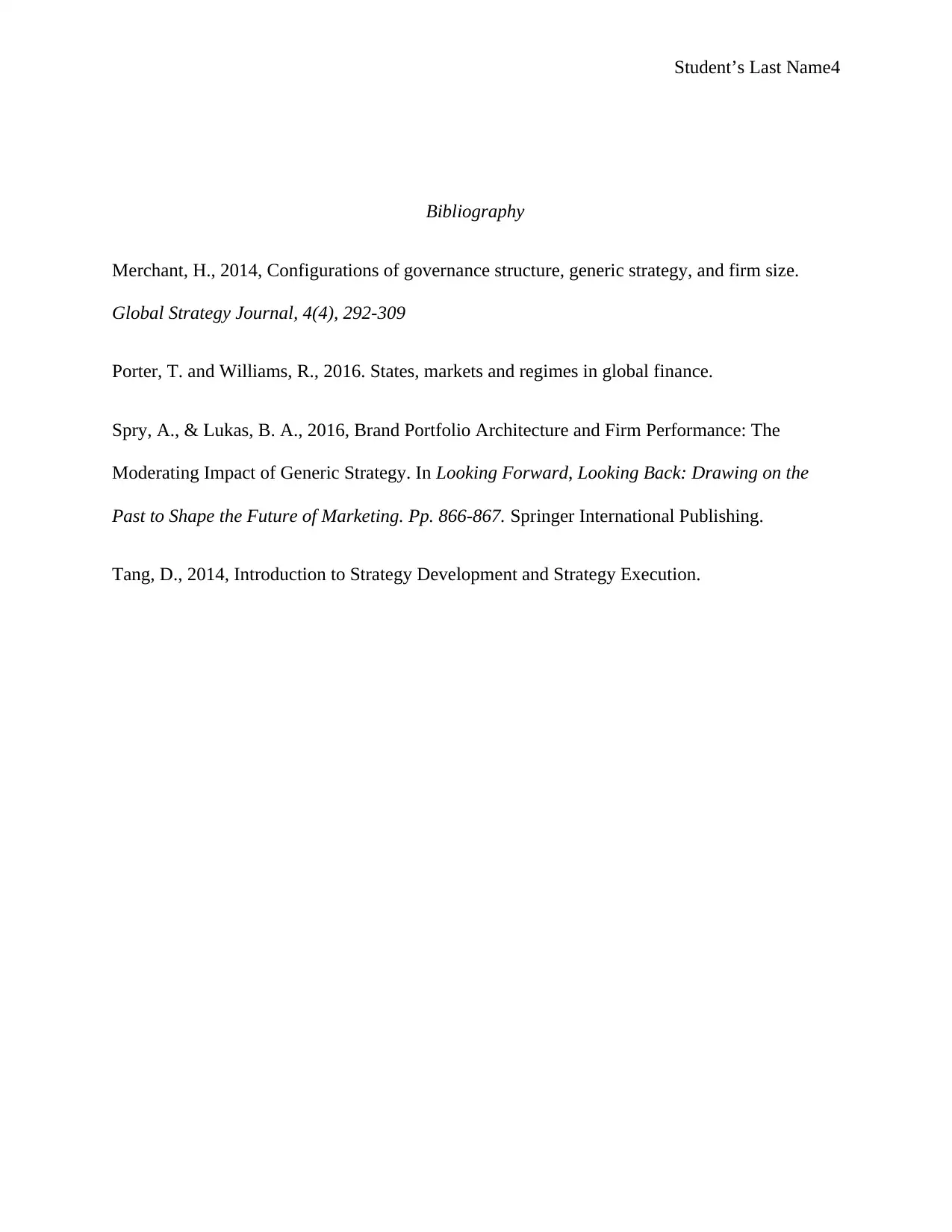Business Report: Competitive Forces and Generic Strategies Analysis
VerifiedAdded on 2020/04/01
|4
|668
|64
Report
AI Summary
This report analyzes the competitive forces and generic strategies within the home entertainment business. It begins with an examination of Porter's Five Forces, including the intensity of rivalry, the threat of new entrants, the bargaining power of suppliers, the bargaining power of buyers, and the threat of substitute products. The report then explores the generic strategies of cost leadership, differentiation, and focus, demonstrating how businesses can gain a competitive advantage. The report emphasizes the significance of product differentiation, brand recognition, and efficient cost management within the home entertainment industry. The report uses the example of Sony to illustrate the application of these strategies. The report concludes by offering a summary of the key concepts and their practical implications for businesses in the home entertainment sector. This analysis is designed to provide a comprehensive understanding of the competitive landscape and the strategic choices available to businesses in this industry.
1 out of 4











![[object Object]](/_next/static/media/star-bottom.7253800d.svg)